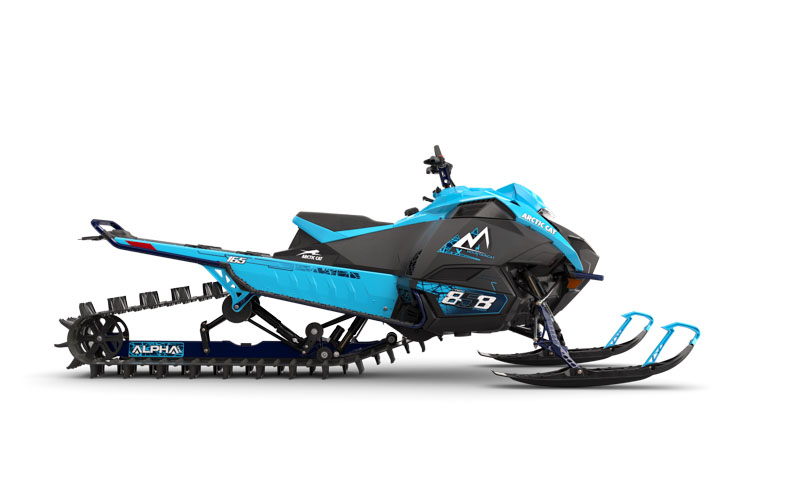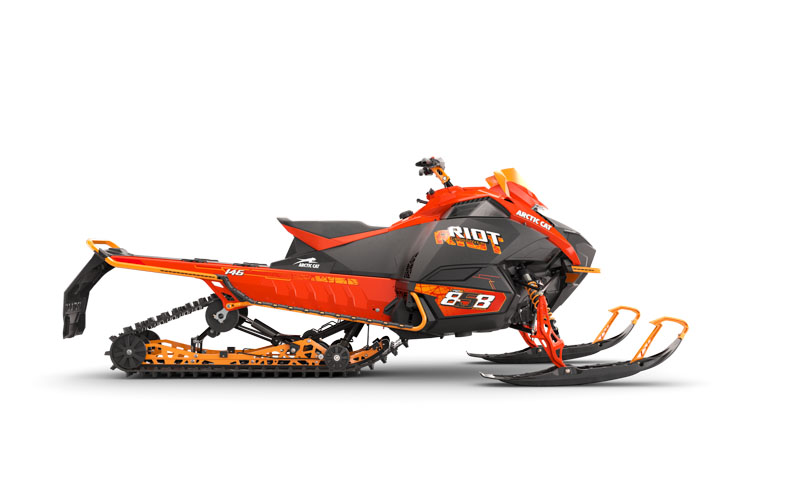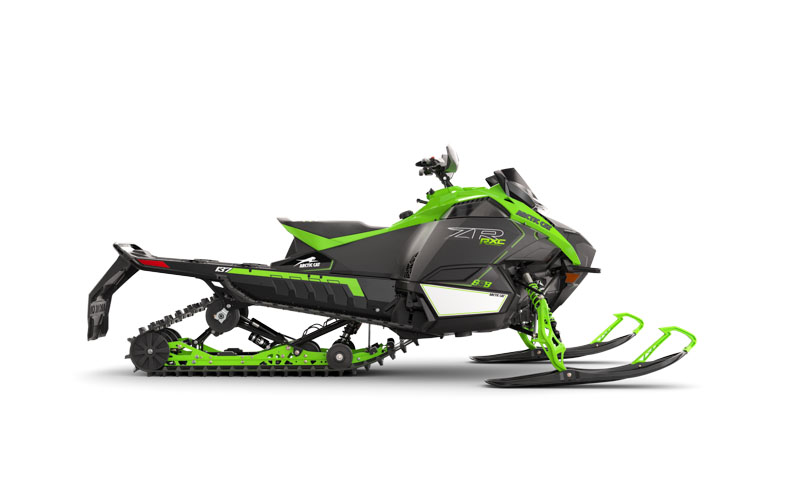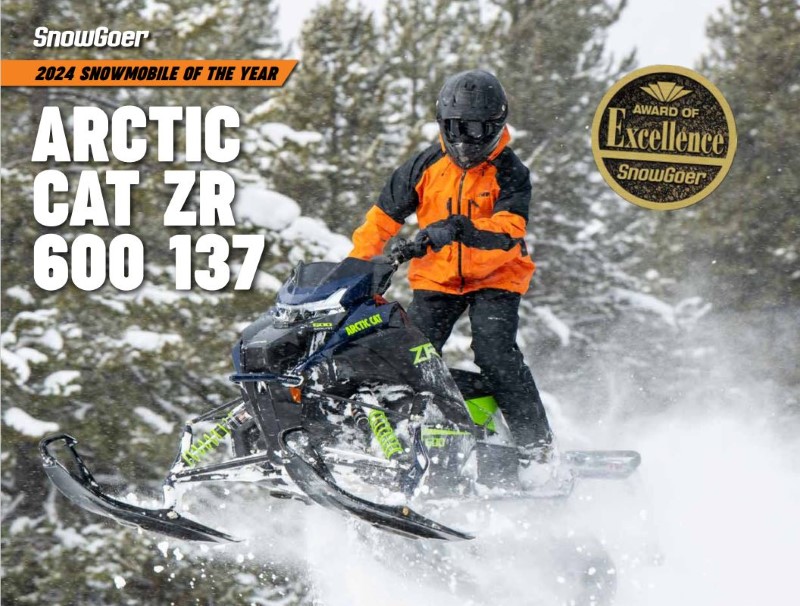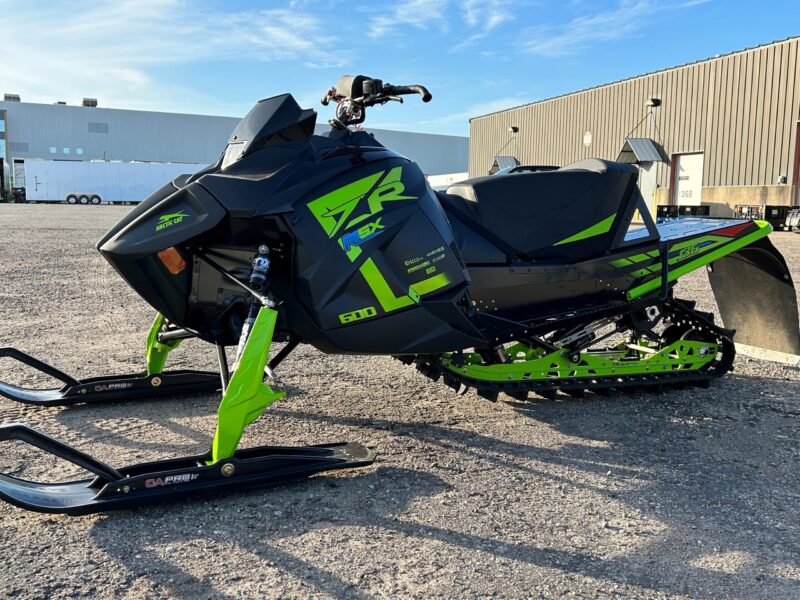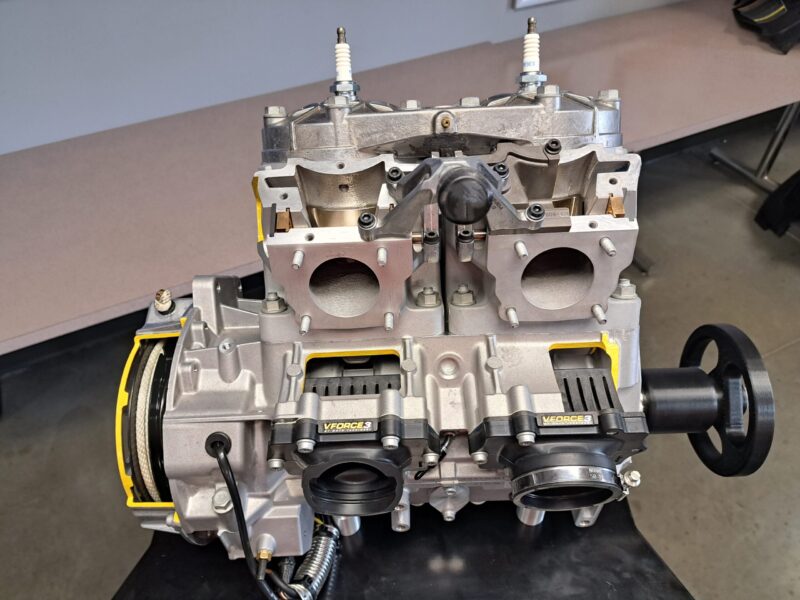
Model year 2003 was when Ski-Doo’s REV chassis essentially changed the future of snowmobile designs and ergonomics; it was also the year Yamaha launched the sport’s first performance-oriented four-stroke sled – the RX-1.
However, those weren’t the only benchmark sleds and chassis unveiled for that season. In fact, Cat enthusiasts might argue that the F Chassis and, more specifically, the F7 Firecat EFI deserve just as much attention.
The Firecat was alluring for many reasons: It featured an ultra-lightweight chassis design, easy-fitting ergonomics and a unique, paradigm-breaking 13.5- by 128- by 1-inch track. The fun factor was multiplied in the 700 class by the shockingly powerful 698cc liquid-cooled twin under the flip-top hood.
The F7 Firecat was a 435-pound, fire-breathing animal – it immediately started whipping not just 700-class sleds but also the 800s in grass drag races during its very first fall and was an incredibly quick snowmobile on trails, lakes and ditches in its first winter.
But for all of the formal and informal race titles it won, the original Firecat F7 also collected a long list of recalls and service bulletins. In fact, Polaris even created an ad enumerating the 2003 Firecat’s 10 service bulletins covering 13 different areas, ranging from the wiring, cooling, fuel, oil and steering systems to the rear suspension and even including the recoil rope and the snow flap.
The biggest engine-related problem was the cylinder not receiving enough oil to overcome Cat’s new reverse coolant fl ow. Once that was fixed, the pistons stopped sticking and the engine has been fairly durable since, according to longtime Cat dealers.
“Once past the service bulletins, it’s been a very rock-solid two-stroke snowmobile,” said Rich Rothmund of TA Motorsports in Francis Creek, Wisconsin. “There are many with over 15,000 miles on them.”
For 2004, the Firecat chassis received some reinforcements and the engine wasn’t wound quite as tight, which made it a bit heavier and slower, but it was still fast and light. A carbureted 700 engine was also introduced that year, but those sleds weren’t nearly as popular – then or now – as the machines with batteryless EFI.

In 2005, most Firecats received Arctic Cat’s ACT (also referred to as “Diamond Drive”) fi nal drive system instead of a chaincase. The first year with the ACT the F7 was overgeared, Rothmund said, which made it slower and also created drive belt durability is sues. By the next season, Cat engineers got the ACT dialed-in better and the 2006 models were about as fast as the original 2003s. Some buyers, though, bought the “R” model with factory-installed reverse that required a chaincase just to avoid the ACT.
Also notable about the Firecats of this era were the amazing, limited edition graphics packages – sleds could be spring-ordered in red, green, black or silver with graphics like the Black Widow, Tiger, Joker, Fighter Pilot, Nightfire, Team Arctic and Patriot, to name a few.
“It was kind of a home run,” noted Tom Rowland of Thomas Sno Sports in Ogilvie, Minnesota, though he said it’s now left some folks who are restoring the sleds scrambling to find the right windshield to match their graphics package.
When considering a used model, look for the usual signs of wear and tear, including ovaled-out suspension mounts, cracked welds, dings in the belly pan, pounded-out running boards, etc. Specific to this chassis, the left side of the bulkhead was the weak point, especially in 2003, so be sure to take an extra look for cracks or bends.
Beyond that, the Firecat F7 weathered fairly well after a staggering start. “The handling was always a little suspect due to the two rear wheels and the skinny track, but they’re a hoot to ride if you like moving around,” Rothmund said. “If you’re willing to move your butt 6 inches and put your knee down, you could carve with those things as good as everything else. They were light enough where you could manhandle them but they were very rider-active sleds.”
Editor’s Note: Every issue of Snow Goer magazine includes in-depth sled reports and comparisons, aftermarket gear and accessories reviews, riding destination articles, do-it-yourself repair information, snowmobile technology and more! Subscribe to Snow Goer now to receive issues delivered to your door 6 times per year for a low cost.

